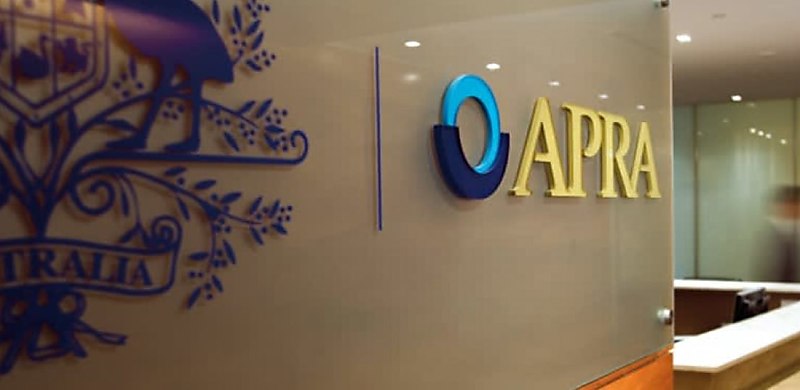
The prudential regulator has maintained that the 3 per cent buffer will remain, amid widespread calls for the regulator to move to a dynamic buffer.
The Australian Prudential Regulation Authority (APRA) has announced that it will keep its current macroprudential policy settings steady following its regular review of domestic and international economic and financial conditions and risks.
While banks do have the discretion to drop the buffer as an exception, APRA has said it believes maintaining the serviceability buffer for banks at its current level of 3 percentage points over the carded rate is “appropriate”.
In reaching the decision to keep the settings steady, APRA noted rising household indebtedness and a pick-up in credit growth, persistent cost-of-living pressures, a weakening jobs market, and heightened geopolitical risks. Balanced against these risks, APRA said that bank lending standards remain sound and non-performing loans remain low.
In its information paper outlining the reasons for APRA’s decision, the regulator said: “The sources of economic uncertainty have shifted over the past year or so, but the risk of shocks for borrowers remains. The risk of persistently higher inflation and further increases in interest rates in the near-term has reduced. Meanwhile, higher unemployment and some persistence in cost-of-living pressures is expected, which present risks to household incomes including if more adverse scenarios eventuated.
“Risks in the global economic environment which could impact the Australian financial system also remain pronounced, including those from ongoing geopolitical instability.
"The setting also takes into account risks to the financial system associated with Australia’s high overall household indebtedness and housing-related vulnerabilities.”
APRA watching credit uptick ‘carefully’
It said: “Against a backdrop of high household indebtedness, the pickup in credit growth over the past year is an area APRA will continue to watch carefully. It is important that the quality of new lending – including the level of the serviceability buffer applied in lending decisions – remains prudent to guard against a future build-up of credit-related vulnerabilities.
“While overall, housing credit is growing at around average rates, the serviceability buffer is operating as expected in constraining a small share of borrowers seeking to borrow at (or near) their maximum capacity.
“APRA considers the impact of the serviceability buffer on access to credit, including for FHBs. Currently, the proportion of new lending to FHBs is in line with long-term averages. Further, accumulating sufficient deposit funds remains the primary constraint to prospective FHBs entering the housing market in most instances, reflecting the relatively high level of housing prices.”
Announcing the decision on Monday (25 November), APRA chair John Lonsdale said: “Since APRA’s last announcement regarding its macroprudential policy settings in July, inflation has continued to moderate and the risk of higher interest rates has receded somewhat, but we are mindful of potential shocks to household incomes from a slowing labour market. That risk is exacerbated by uncertainty in the global economic environment including geopolitical instability.
“Credit continues to flow to households and businesses and is accessible to good quality borrowers. Although house price growth has eased, prices are still 40 per cent higher than before the pandemic and household debt is high relative to incomes both compared with long-term trends and relative to international peers. This high household debt is a key vulnerability if adverse economic scenarios came to pass. We also have seen an uptick in non-performing loans, with the potential for further rises, especially if unemployment increases.
“In light of these considerations, APRA maintains its current macroprudential policy settings. We will continue to closely monitor the external operating environment and will consider modifying these settings should that become appropriate.”
APRA has also confirmed the countercyclical capital buffer (CCyB) will remain at 1 per cent of risk-weighted assets and there will be no limits on lending or constraints on capital distributions at this time.
Broking industry calls for a dynamic buffer
The decision goes against growing calls for the regulator to be more flexible in setting the buffers, with the broking industry telling the Senate inquiry into the financial regulatory framework and home ownership that while the concept behind a buffer was “sensible”, the blanket approach to how it is applied and its inflexibility were not.
For example, industry representatives said that the 3 per cent buffer disproportionately affects FHBs with smaller deposits and lower incomes, limiting their borrowing power and access to home loans, but a dynamic buffer that adjusts with interest rates would improve borrowing access when rates are low and provide more responsible lending practices when rates rise.
Speaking earlier this year, CEO of the MFAA, Anja Pannek, said: “In our refinancing and mortgage stress survey results released earlier this year, our members confirmed that serviceability continues to be the number one barrier for clients looking to refinance, with the 3 per cent APRA serviceability buffer rate being a key factor in borrowers being unable to meet serviceability requirements.
“We believe there should be greater flexibility for lenders to assess applications using the 1 per cent buffer, for like-for-like refinances so people can move to a loan better suited to their current needs.”
Managing director of the FBAA, Peter White, also told The Adviser earlier this year that he believes the serviceability buffer is “still too high” despite it not changing the dynamics of lending today.
“We’re in a marketplace where [interest rates] are stable, I don’t see rates going up again for quite a long time,” White said.
“The $64 million question is, when do rates go down? Now with certain indicators, [it’ll be] probably the back end of the first quarter of 2025 before we see [rate cuts].
“Three per cent, in my mind, is still too high. I’d like it to be around one and a half to 2 per cent.”
[Related: Broking industry leaders tell Senate why buffers should change]
 Login
Login











JOIN THE DISCUSSION